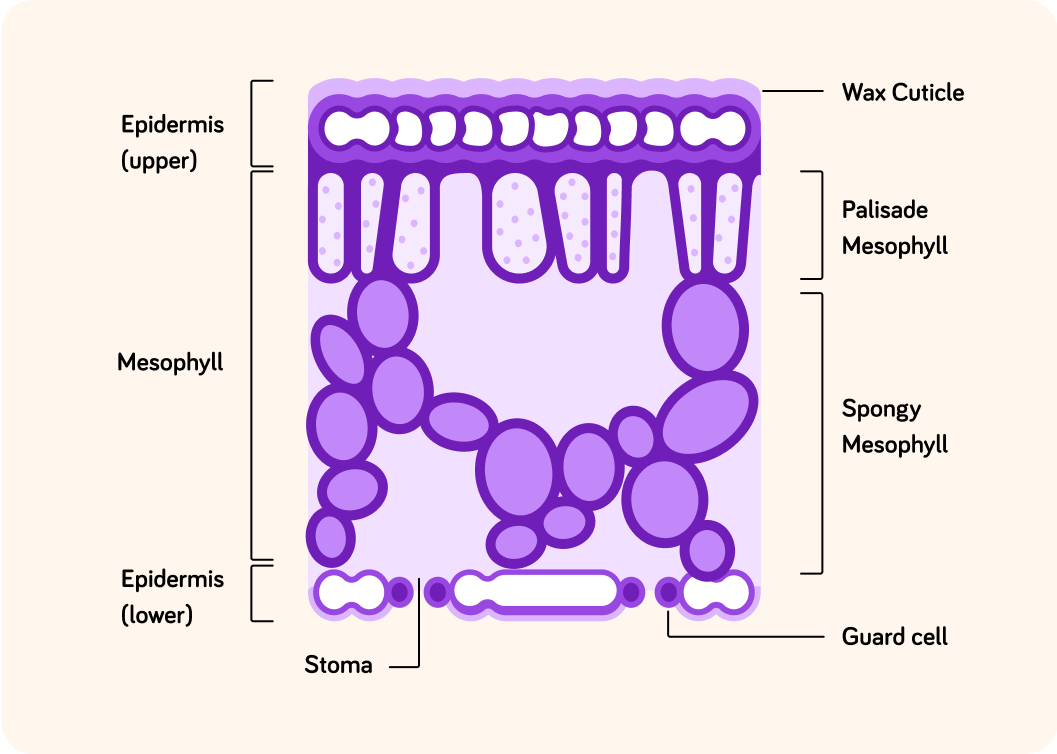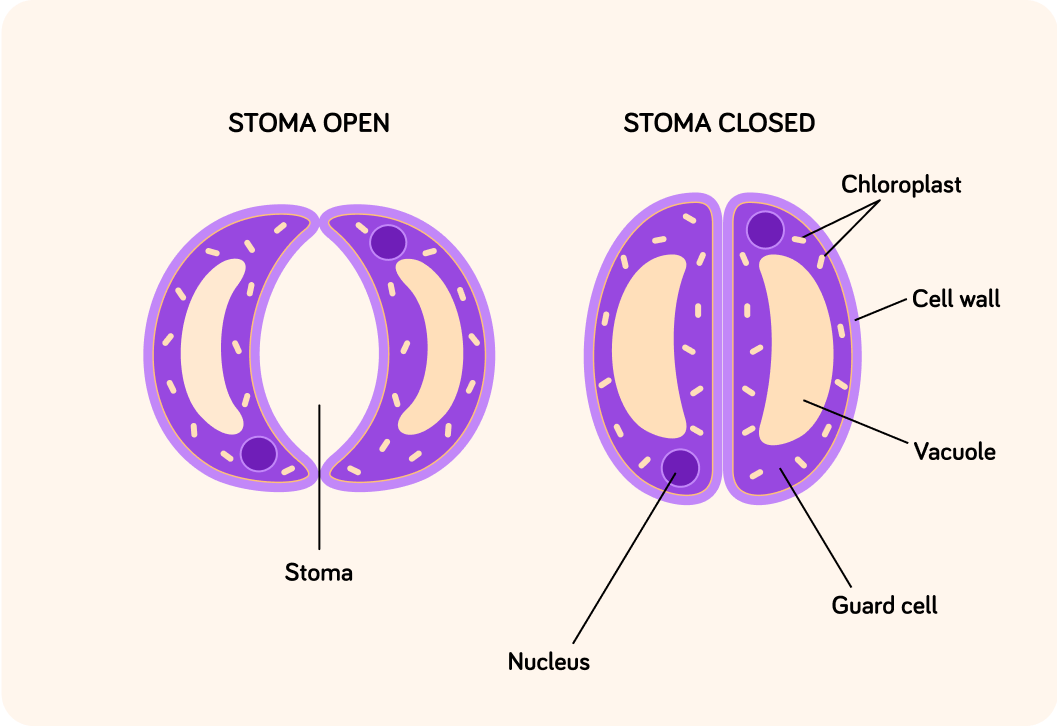YOU ARE LEARNING:
Stomata

Stomata
We will discover the structure and function of stomata.
Name the process that plants carry out to make glucose.

How does a plant obtain the carbon dioxide gas that is required for photosynthesis?

What is the name of the pores in the lower leaf surface? See the diagram.


A plant must have stomata to allow carbon dioxide to enter the leaf. Without it, it can't carry out photosynthesis. However, substances can also escape! What do you think could cause harm to the plant if a lot of it escapes through the stomata?

Stomata are required for gas exchange. A consequence of having stomata is that water may be lost as water vapour. The evaporation of water through the stomata is called transpiration.
What would you suggest would be a good way to prevent water loss?
A) Grow more roots B) Close the stomata C) Don't move as much
Answer A, B or C.


Try to remember the name for the two cells that allow the stomata to open and close. Type in the name below.


Complete this sentence: By opening and closing stomata. plants control the rate of __________

When guard cells open the stoma, they swell up. We say they become turgid. They swell up in the same way as other plant cells, which is by...

So what do you think happens in reverse to close the stomata?

Stomata open when water enters the guard cells and makes them turgid (when they swell up). Stomata **** close when water leaves the guard cells, **** making them shrink. In that way, plants can control the rate of transpiration (loss of water) and gas exchange.
